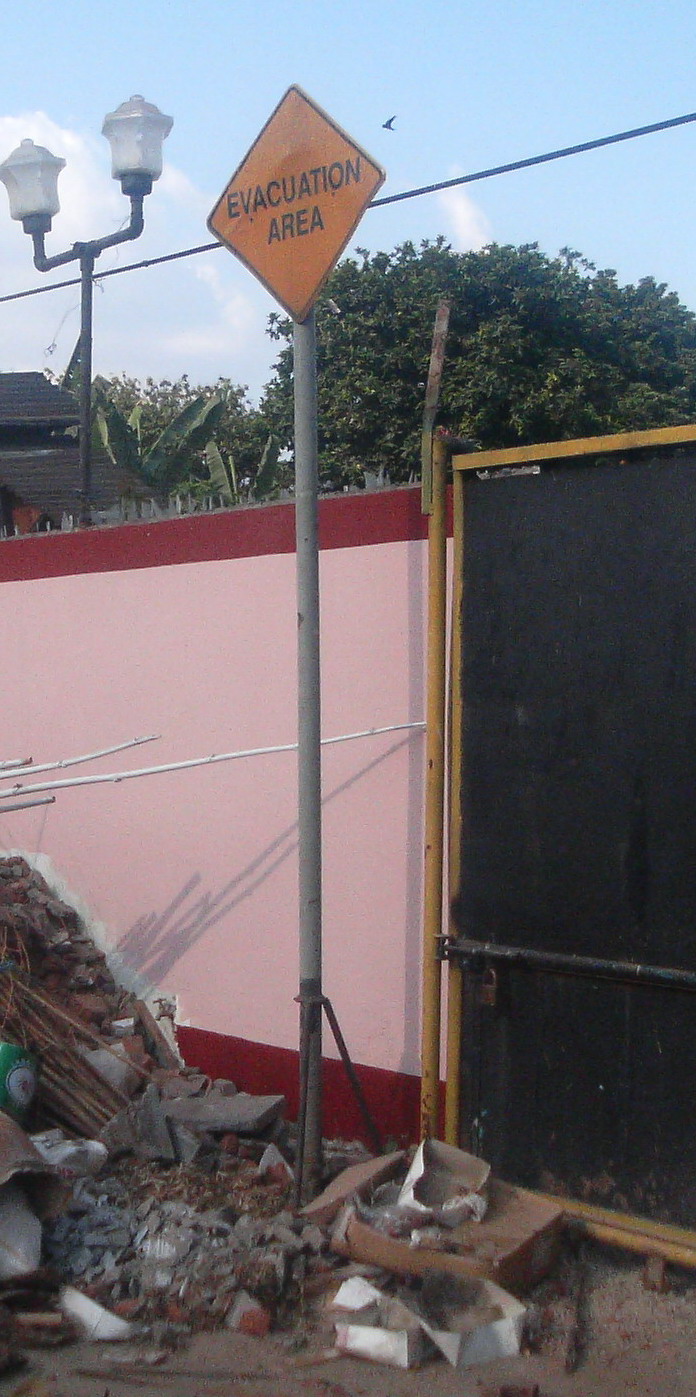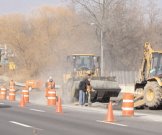
YORK UNIVERSITY
INDUSTRIAL HYGIENE SURVEY
PROGRAM
Prepared by: Department of Occupational Health and Safety
Reviewed and Edited by: JHSCs for YUSA/APUY, CUPE 3903, CUPE 1356 and 1356-1
Date Developed: September 2002
September 2002 6
d) Where industrial hygiene testing is required, DOHS performs the appropriate testing in
cooperation with the employee, supervisor and appropriate JHSC member(s).
e) DOHS reports all findings and makes recommendations, as needed, to the reporting
supervisor and appropriate JHSC member(s).
f) The reporting supervisor advises the original reporting employee of DOHS’ findings and
makes available to the employee, upon request, a copy of the report, as per the Occupational
Health and Safety Act.
York University Industrial Hygiene Survey Program
Table of Contents
1) Objectives…………………………………………………………………………………3
2) Philosophy……………………………………………………………………………...… 3
3) Program Review………………………………………………………………………….. 3
A) Joint Health and Safety Committees…………………………………………. 3
B) Department of Occupational Health and Safety……………………………… 3
5) Monitoring Schedule………………………………………………………………………4
6) Reporting Procedure………………………………………………………………………5
7) Standards and Guidelines………………………………………………………………… 6
September 2002 3
1) Objectives
To ensure that all potential occupational and environmental health hazards at York University are
controlled and maintained at levels below those established by existing occupational and
environmental health and safety regulations and guidelines.
2) Program Review
The York University Industrial Hygiene Survey Program shall be reviewed once every two years
in consultation with the Joint Health and Safety Committees.
3) Roles and Responsibilities
A) JOINT HEALTH AND SAFETY COMMITTEES
The Joint Health and Safety Committees (JHSC) are responsible for:
a) Investigating and identifying potential occupational and environmental health hazards and
recommending procedures to eliminate risk.
b) Consulting in the development and review of the York University Industrial Hygiene Survey
Program.
c) Consulting in and having a designated representative present at the beginning of industrial
hygiene testing, as performed by the Occupational Hygienist.
d) Fulfilling any remaining functions or requirements of a JHSC, as defined by Section 9 (18)
of the Occupational Health and Safety Act.
B) DEPARTMENT OF OCCUPATIONAL HEALTH AND SAFETY
The Department of Occupational Health and Safety (DOHS) is responsible for:
a) Developing, reviewing and revising the Industrial Hygiene Survey Program at York
University in consultation with the Joint Health and Safety Committees. The review should
occur once every two years.
b) Providing industrial hygiene monitoring by an Occupational Hygienist in accordance with
the Industrial Hygiene Survey schedule.
September 2002 4
c) Ensuring that the appropriate JHSC worker member has been informed of scheduled (i.e.,
non-emergency) testing so that he or she can be present, as per the Occupational Health and
Safety Act, Section 9(18)(e). Any concerns expressed by this representative should be
documented by DOHS.
d) Ensuring that records of the Industrial Hygiene Survey test results are maintained and that
copies are provided to the appropriate JHSC with the necessary recommendations, if any.
4) Monitoring Schedule
Several potential occupational and environmental health hazards have been identified as part of
workplace hazard analysis at York University. Programs involving worker training, hazard control
and management have been created to address these potential hazards. The following is the
proposed industrial hygiene survey schedule:
Potential
Hazard Application Monitoring Frequency
Asbestos Building repair operations and
renovations
As required by work being performed or as a
result of the unexpected discovery or
disturbance of friable asbestos containing
materials or in accordance with the
requirements set out in the York University
Asbestos Management Program
Indoor Air
Quality
In office areas as well as
industrial settings (e.g. machine
shops, mechanical areas,
garages, etc.)
In accordance with the requirements set out in
the York University Indoor Air Quality
Program
Mould Buildings or areas with water
damage
As required in the case of concerns and in
accordance with the requirements of the York
University Mould Control Program
September 2002 5
Potential
Hazard Application Monitoring Frequency
Noise: Industrial settings (e.g.
power generating facilities,
machine shops, mechanical
rooms, garages, etc.)
Annually, as mandated in the York University
Hearing Conservation Program and upon
request
Ergonomics: Job-specific
throughout campus
As required in the case of ergonomic problems,
in accordance with the Musculoskeletal
Discomfort Assessment Procedure
Indoor lighting: Indoor
workplaces
As required in the case of specific lighting
concerns or indoor air quality concerns
Lasers/Radiation: Science
research laboratories
At least annually, as mandated in the York
University Laser Safety Program and the York
University Radiation Safety Program
Physical
Hazards
(i.e., Noise,
Ergonomics,
Indoor
Lighting,
Radiation,
Lasers,
Thermal
Stress)
Thermal Stress: Job-specific
throughout campus
As required in the case of thermal stress (i.e.,
heat or cold) problems and in accordance with
the requirements set out in the York University
Indoor Air Quality Program
Toxic Gases
(Including
Odours)
Confined spaces and leaks or
spills
As required in the case of leaks or spills and in
accordance with the requirements of the York
University Confined Space Program
5) Reporting Procedure
Upon discovery of an industrial hygiene concern, the procedure below should be followed:
a) Discovery or report of an industrial hygiene concern by the employee.
b) The employee should contact his or her supervisor to begin an investigation, as per York
University’s Hazard Reporting System. Please refer to the following URL for this
procedure: http://www.yorku.ca/dohs/doc/Procedures/hazardreport.pdf
c) If deemed an industrial hygiene problem, the supervisor should contact DOHS to begin an
industrial hygiene investigation.
6) Standards and Guidelines
The results of the Industrial Hygiene Survey, as performed by DOHS, will be compared to existing
occupational and environmental health and safety regulations and guidelines. These may include:
• Ontario Ministry of Labour. Regulation respecting control of exposure to biological or
chemical agents – made under the Occupational Health and Safety Act (Reg. 833/90, as
amended by O. Reg. 513/92, O. Reg. 597/94 and O. Reg. 388/00).
• Ontario Ministry of Labour. Regulation respecting asbestos – made under the Occupational
Health and Safety Act (Reg. 837/90, as amended by O. Reg. 509/92, O. Reg. 598/94 and O.
Reg. 386/00).
• Ontario Ministry of Labour. X-Ray Safety – made under the Occupational Health and Safety
Act (Reg. 632/86).
• Ontario Ministry of Labour. Regulations for Industrial Establishments – made under the
Occupational Health and Safety Act (Reg. 851/90, as amended by O. Reg. 516/92, O. Reg.
630/94 and O. Reg. 230/95).
• American Conference of Governmental Industrial Hygienists (ACGIH). Threshold Limit
Values for Chemical Substances and Physical Agents and Biological Exposure Indices.
• American Society of Heating, Refrigeration and Air Condition Engineers (ASHRAE).
Thermal Environmental Conditions for Human Occupancy (Standard 55-1992) and
Ventilation for Acceptable Indoor Air Quality (Standard 62-1999).
• Health Canada. Indoor Air Quality in Office Buildings: A Technical Guide (1995) and
Fungal Contamination in Public Buildings: A Guide to Recognition and Management
(1995).
•
New York City Department of Health. Guidelines on Assessment and Remediation of Fungi
in Indoor Environment (2000).
• Canadian Nuclear Safety Commission. Nuclear Safety and Control Act and Regulations.
• American National Standards Institute. American National Standard for Safe Use of Lasers.
ANSI Z136.1-2000.
• Canadian Standards Association International. CSA-Z412 Guideline on Office Ergonomics.



























































Tidak ada komentar:
Posting Komentar